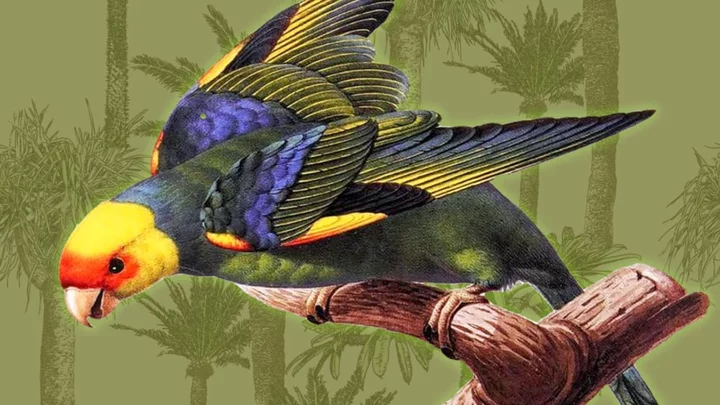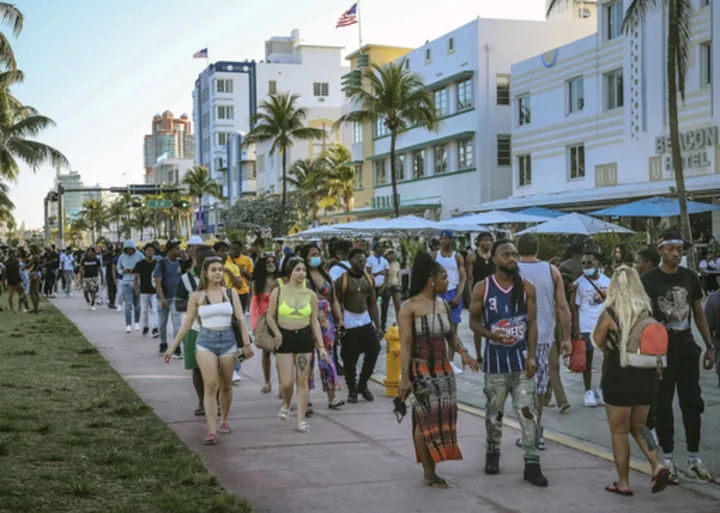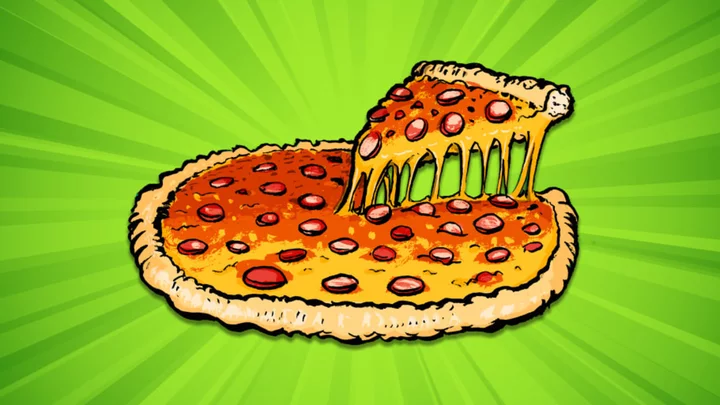The last captive Carolina parakeet in the United States, a male bird named Incas, died in the aviary at the Cincinnati Zoo in 1918—expiring within a year of the demise of his female companion, Lady Jane. Though the zoo tried to breed the pair for more than three decades, Incas and Lady Jane seemingly had no desire to prolong the existence of their species: Instead, the couple had a proclivity for evicting their eggs from their nest, and never successfully produced a chick.
By the time Incas expired, wild Carolina parakeets were rare, too. Even experts had a hard time spotting the birds in their last known habitat, the swamps of southern Florida. On a field trip to Okeechobee County in 1904, legendary ornithologist Frank Michler Chapman documented only a dozen Carolina parakeets. The last official sighting of a wild Carolina parakeet was in 1920, though unconfirmed reports of the birds in southern Florida and along the Santee River in South Carolina trickled in until the 1940s. The species was officially declared extinct in 1939.
It was a surprising turn of events. Though habitat loss and hunting had taken a toll on the jade-colored parrots, populations appeared stable in Florida, and there were no signs the species was on a path to extinction—until, all of the sudden, they just vanished.
More than 80 years after the birds were declared extinct, scientists are still puzzling over their abrupt disappearance—and now, evolutionary biologists are using new tools to decipher the lingering clues and solve this avian cold case.
An Ecological Enigma
Referred to as puzzi la née, or “head of yellow,” by the Seminole, the Carolina parakeet was actually a small parrot. The wild birds were a common sight in America’s fields and forests when the first European colonizers arrived, inhabiting a sizeable swath of the eastern United States, from the Midwest to the Atlantic Coast. The birds were even reported as far north as upstate New York.
They had distinctive golden crowns with tangerine-colored patches covering their cheeks and foreheads. Often traveling in large groups that numbered around 300 birds, the colorful parakeets favored swampy bottomland forests spread along rivers, primarily because they preferred to nest in the cavities of mature trees. They also thrived in agricultural landscapes. Like other parrots, Carolina parakeets had an extensive palate and feasted on a variety of fruits, seeds, and grains. The birds had a particular penchant for cockleburs and were immune to the toxins in the weed’s seeds.
Humans considered the parakeets’ habits irksome. A flock of the birds could decimate an apple orchard or cornfield; landowners often shot them when they descended on crops. And because the sociable parakeets typically stopped to mourn fallen members of their flock, they were an easy target for gun-wielding agriculturalists. Their gregarious nature also made the birds popular as companion animals, and they were captured by trappers to be sold as pets.
Their colorful plumage was another detriment. The Victorian-era fashion craze known as the plume boom increased demand for feathers, wings, and even entire birds to adorn women’s hats. Herons, egrets, and Carolina parakeets were prime targets for U.S. plume merchants.
The passage of the Weeks-McLean Act in 1913 outlawed the commercial hunting of migratory birds, effectively putting an end to the plume trade in the United States [PDF]. (The Migratory Bird Treaty Act strengthened these provisions and introduced other protections in 1918.) Heron and egret populations slowly rebounded, and Carolina parakeet populations appeared to recover, too.
Then, abruptly, they were gone.
Clues in the Case
There were other leading suspects in the disappearance. The birds’ preferred habitat was rapidly disappearing: Southern swamps were being drained to create more farmland, and most of the East’s forests had been razed. Parakeets may have been competing with honey bees for tree cavities, the birds’ preferred nesting and roosting habitat. Or, their fondness for poisonous cockleburs drew them to farms and exposed them to avian diseases carried by domestic chickens.
Adding to the enigma, more than a dozen parrot species have been declared extinct in the last two centuries—including the Cuban macaw, the paradise parrot, and the Seychelles parakeet—but they were all island species. The Carolina parakeet, with its wider and more diverse range, is the one exception.
Some culprits have been ruled out by recent studies. In a 2020 paper in the journal Current Biology, a team of evolutionary biologists and paleogeneticists sequenced the Carolina parakeet’s genome, using genetic material harvested from the leg bone of a specimen preserved in a museum in Spain. They found no genetic indication of inbreeding and few genomic signs that the species was destined for extinction.
To unravel the mystery, Dr. Kevin Burgio , a postdoctoral fellow at the University of Massachusetts’s Northeast Climate Adaptation Science Center, spent more than six years pouring over recorded sightings of the Carolina parakeet, the earliest dating back to the 1500s. Then, he mapped these historical accounts to get a better idea of the parakeet’s actual range. His research suggests there may have been two subspecies of the bird—one found in the Midwest, with a range that extended south to Texas and Louisiana, and an Eastern subspecies, with a range that extended from Florida to Virginia.
This finding could be a major break in the case. According to Burgio’s research, the Midwestern subspecies likely disappeared by 1914, nearly 30 years before the Eastern population was officially declared extinct.
“If you think about the period of time the Carolina parakeet [was going] extinct, from 1800 to 1900, we saw in the U.S. a rapid and huge expansion of agriculture,” Burgio tells Mental Floss. “As we expanded and created more agriculture, especially in the West, you saw the population of Carolina parakeet[s] decreasing from proximity to humans—in whatever way that happens, through introduced diseases, persecution, or whatever.”
But scientists still haven’t identified the definitive smoking gun. “For me, the answer is probably all of it. Persecution, there was probably some habitat loss that affected them, there was probably some disease that was acting as well,” Burgio says. “But what was the main driver? Who knows. And we’ll likely never know.”
Lazarus Birds
Even though no one has seen a live Carolina parakeet for more than a century, the birds do have a living relative—one able to provide valuable genetic material. Sun parakeets, an endangered species native to Brazil and Guyana, bear a conspicuous resemblance to their extinct American cousins.
This genetic resource, plus the Carolina parakeet’s mapped genome, lead researchers one step closer to resurrecting the species, a controversial process called de-extinction. The Long Now Foundation’s Revive & Restore project is working to restore the passenger pigeon, a species that disappeared just a couple decades before the Carolina parakeet. If the pigeon project succeeds, the parakeet could be next.
Not every scientist is on board with regenerating extinct fauna, however. Skeptics point to all the uncertainties surrounding the viability of a species that hasn’t walked the earth for decades—or centuries—while supporters highlight the potential for de-extinction to be used as a tool to conserve species on the brink of extinction now.
Solving the mystery of the Carolina parakeet’s demise could provide valuable lessons for preserving species like the sun parakeet. Parrots are among the most imperiled bird groups on the planet due to habitat loss. Worldwide, almost a third of all parrot species face the threat of extinction, and existing protected areas won’t be enough to protect the planet’s remaining parrots if deforestation continues at its current pace—especially in South America, Central America, and the Caribbean, where parrot diversity is highest.
“If you think about the areas with parrots, especially in the Americas, they’re in rapidly developing nations that are in many ways going through the same transition the United States did [150 years ago],” Burgio says. “They’re already threatened by this proximity to humans and habitat loss. In a way, you are seeing the same phenomenon happen.” The timeline of the parakeets’ demise tracks with the colonization and industrialization of America, and today, loss of forests is a still among the primary threats to wild parrots. For now, the Carolina parakeet remains a haunting reminder of just how quickly a once-thriving species can be eliminated.
“If it can happen to a parrot that takes up half of the United States, basically, in range, [and] that was charismatic and beautiful,” Burgio says, “we have to take stock of what we have and try to conserve it before that’s gone, too.”
This article was originally published on www.mentalfloss.com as The Curious Extinction of the Carolina Parakeet: An Avian Cold Case.









